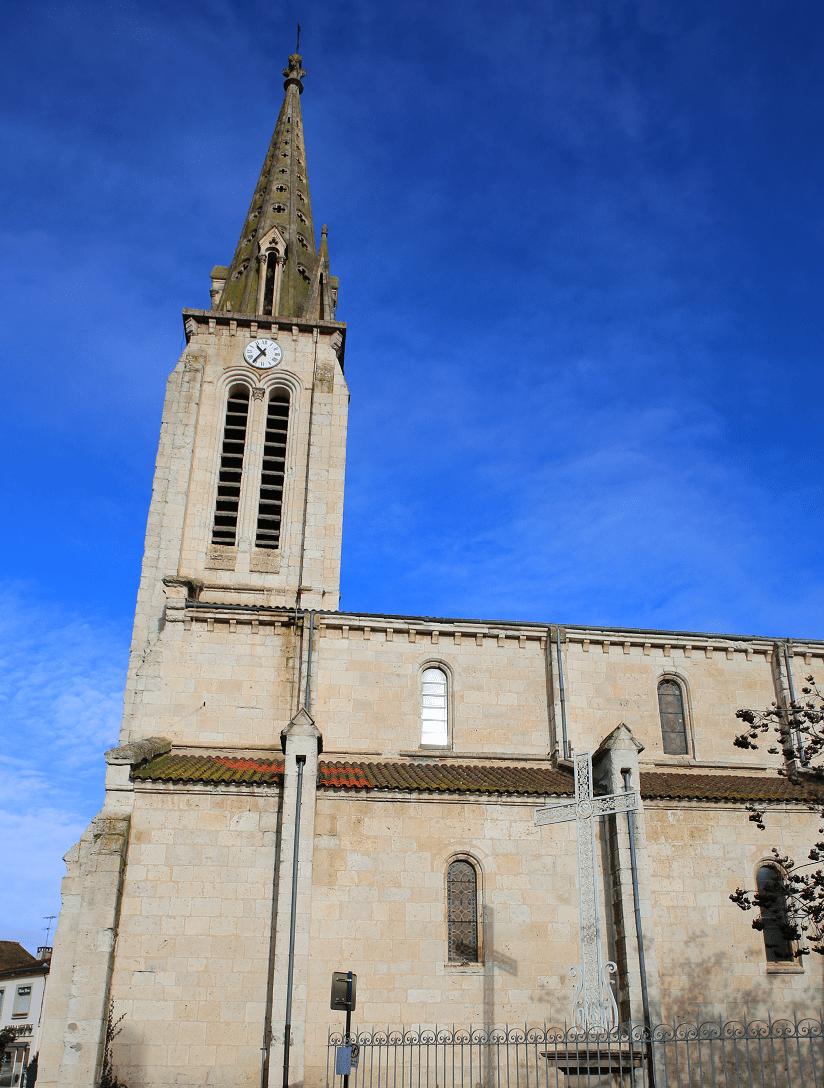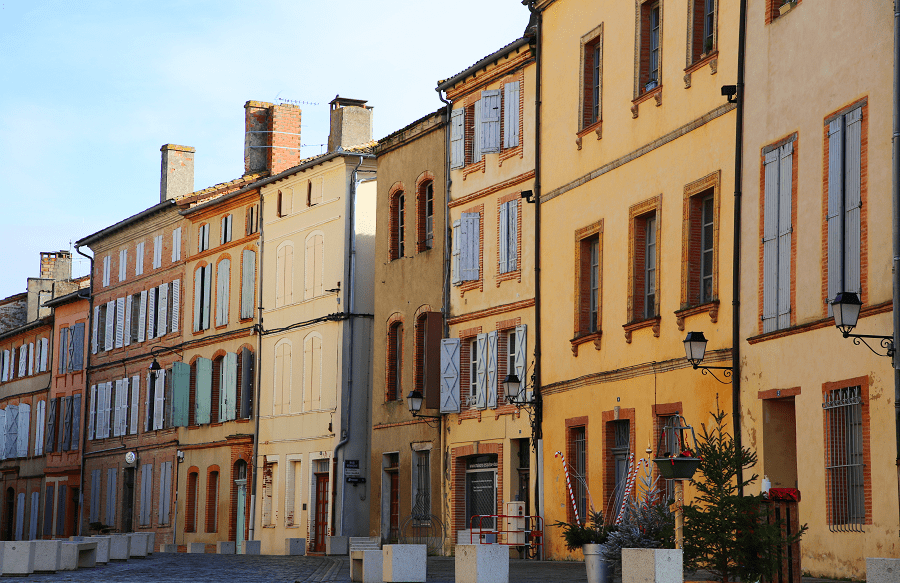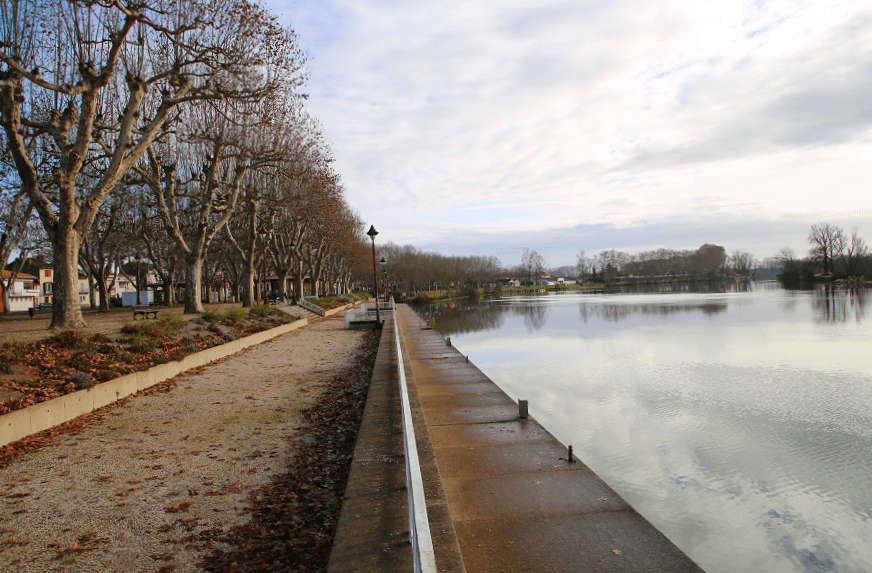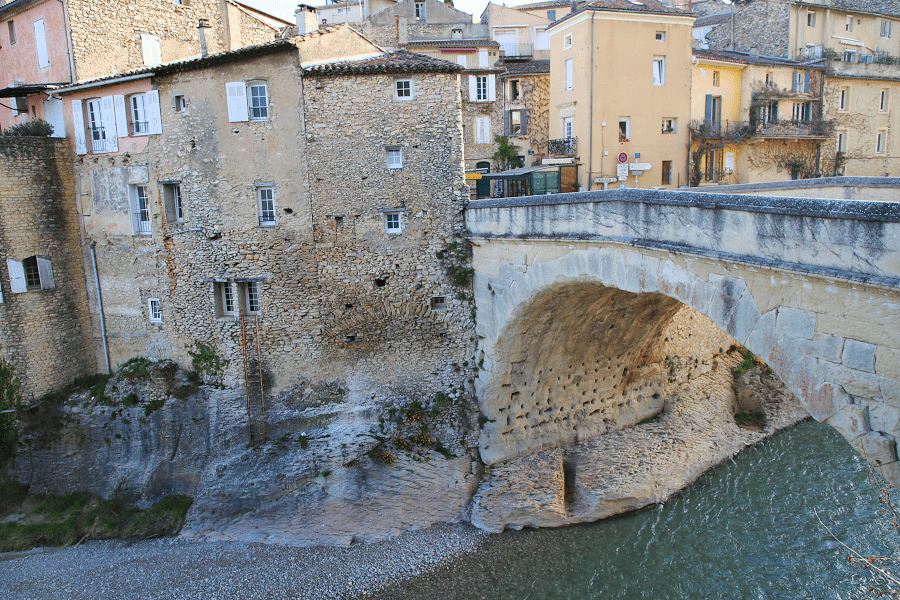Moissac is a commune in the Tarn-et-Garonne department in the Occitania region in southern France.
The town is situated at the confluence of the rivers Garonne and Tarn at the Canal de Garonne.
Main attractions
Religious Heritage
The Moissac Abbey and the Saint-Pierre Church, former abbey church with the portal (1130) – one of the masterpieces of Romanesque sculpture. All that remains of the 11th century building is the massive bell tower-porch, a sort of keep with a walkway, built for defensive purposes but whose top floor only dates from the end of the Gothic period. Cloister (end of the 11th century) is one of the best preserved in the Christian West.
Saint-Pierre Abbey and its cloister were among the first buildings classified and restored as historic monuments by the commission chaired by Mérimée, in the 1840s. They were included in 1998 as a UNESCO World Heritage Site under the title of the Camino de Santiago.
The Saint-Martin church, parts of which date from the 3rd century . The church (except the north chapel) was classified as a historic monument in 1922. The 14th century wall paintings that adorn the archivolt of the entrance arch and the walls of the side chapel were classified as historical monuments in 1953.
The old Saint-Michel de Moissac church, located at 49 rue Malaveille, mentioned in 1073, but its origin is much older.
Civil Heritage
Cacor aqueduct, 356 m long, east of Moissac, allows the Garonne lateral canal to cross the Tarn. The Garonne lateral canal, built in 1847, which crosses the departments of Lot-et-Garonne and Tarn-et-Garonne, is 183 km long. It originates in Toulouse and ends in Castets-en-Dorthe.
It extended the Canal du Midi, which existed between Sète and Toulouse.
Today it is used more for tourism than for inland waterways.
The Moissac Museum is located in the former abbots’ dwelling, an imposing construction flanked by a crenellated brick tower from the 13th century. Two maps allow you to appreciate the influence of the abbey in the Middle Ages.
The market halls, Place des Récollets, were built in 1891 by municipal architect Jean Rouma. The building, inside and around which the weekly market is held, elegantly combines stone, brick and cast iron, and its ceramic decor already boasts local products.
The Napoleon Bridge was commissioned by Napoleon I and completed by Napoleon III.
How to get to?
From Paris: 8 hr 5 min (648 km) via A20
From Toulouse: 1 hr 13 min (79.5 km) via A62
From Andorra: 3 hr 36 min (261 km) via N20
From Barcelona: 5 hr 14 min (403 km) via C-16
From Madrid: 8 hr 31 min (782 km) via A-1
From Monaco: 6 hr 10 min (652 km) via A8
From Moscow: 35 hr (3,407 km) via E30/M1
From Belgrade: 18 hr 39 min (1,956 km) via E70
From Istanbul: 29 hr (2,905 km) via E70
From Bern: 7 hr 54 min (820 km) via A89
Main information
Area: 37 km2
Population: 13 748
Coordinates: 44°06′20″N 1°05′10″E
Language: French
Currency: Euro
Visa: Schengen
Time: Central European UTC +1
See here Pyrenees travel guide
See here France travel guide
See here Spain travel guide




























